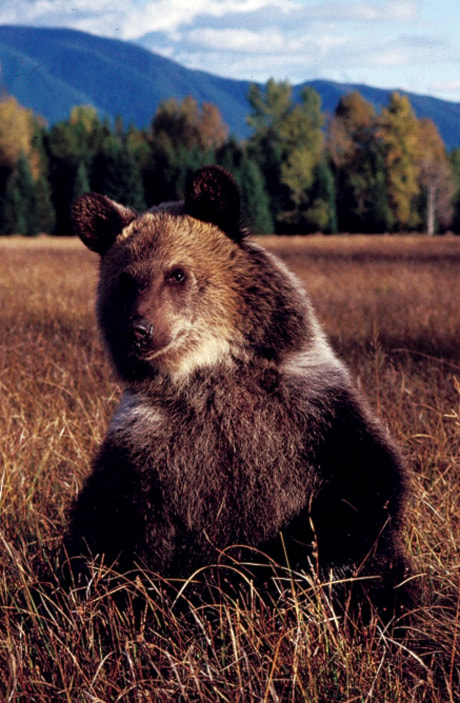EDMONTON — Wildlife and railway experts will be thinking outside the boxcar this winter to come up with ways to reduce the number of grizzly bears that are killed by trains that rumble through the Rocky Mountain national parks.
Placing water cannons on trains to squirt bears away from the tracks is the most colourful idea being floated.
But the talks involving Parks Canada and Canadian Pacific Railway Ltd. (TSX:CP) are expected to focus on more practical solutions such as fencing off portions of the tracks and building special overpasses so bears can walk over the rail line instead of on it.
It’s all part of efforts to cut an unacceptable number of grizzly deaths, particularly among females who are of cub-bearing age, says Bill Hunt, resource conservation manager for Parks Canada in Banff, Yoho and Kootenay national parks.
“We are sitting down this winter with Canadian Pacific to talk through the pros and cons of each of these options and some of them might not be practical,” Hunt says.
“The bear population in this part of the country is sensitive to any increase in human-caused mortality. If we can get rid of a fairly significant unnatural cause of death, then that is going to make the bear population that much more viable for future Canadians to enjoy.”
A Parks Canada report done in May notes at least 63 bears, mainly females, have died in the mountain parks between 1990 and 2008. The vast majority of the deaths were related to interaction with humans. Railways are listed as the main cause.
The biggest problem is in Banff National Park, where the number of deaths of independent female grizzlies has exceeded Parks Canada targets for the past seven years.
Why are so many bears dying on the tracks? Experts say that one of the main reasons is grain spilled from bulging hopper cars en route to Vancouver from Prairie farms.
Spills of wheat, corn, peas and other grains are irresistible to the hungry omnivores, described as walking stomachs with noses.
Some grizzlies will revisit spill sites again and again, year after year, clawing holes in the rail bed in search of kernels of grain. Once they start eating they are oblivious to approaching trains.
Since 2007 CPR has been working to fix faulty gates on 6,600 grain cars so they won’t leak. More than 4,400 of the cars have been refurbished so far and it’s possible the company will finish the job by the end of next year or early 2011 — years ahead of schedule. The price tag for the repairs is $20 million.
The company also uses a special rail vehicle to vacuum spills along the line, says Breanne Feigel, a CPR spokeswoman.
“We are reducing the spillage of grains as it travels west,” Feigel said. “We believe we are on the right path to making a difference.”
Parks Canada says dealing with grain spills is important, but it’s only part of the solution. Bears and other wildlife are well accustomed to using the tracks as a pathway. CPR trains have been running through the area for 125 years.
Fencing off problem areas and building wildlife overpasses are reducing the number of bear deaths on the Trans-Canada Highway through Banff National Park. The same idea could work on the rail line, Hunt says.
Research is underway into how to prevent bears from simply walking around such fences, perhaps with electrified gates, similar to cattle guards used by ranchers.
“The numbers are very clear that the crossing structures are effective,” Hunt says. “We are fairly confident that if we can manage the end of the fence issue we could, over time, build successful crossing structures there as well.”
Feigel says CPR is also looking at blowing train whistles going into curves and perhaps putting high frequency wildlife whistles on locomotives to shoo the bears away.
CPR has worked closely with Parks Canada for years and remains committed to helping the bears thrive in the mountain parks, she says.
As for squirting the grizzlies, Feigel says that idea doesn’t hold much water.
“It would take years to implement or even think about,” she says. “We have 1,400 locomotives. The water cannon idea would not be considered.”
